Reviews
L’Occhio del male / The Evil Eye
Lucio Fulci
Italy, 1982
Credits
Review by David Carter
Posted on 09 January 2012
Source Anchor Bay DVD
Categories Lucio Fulci’s Gates of Hell
There are numerous thematic links in the films Lucio Fulci made between 1979 and 1982. One would be setting, and these years roughly constitute Fulci’s “American period” as his most notable works from the time were filmed and set in the United States1. Fulci strayed from America twice during this time, in 1980 for the masterfully crafted poliziotteschi Contraband and again in 1981 for the uninspired Poe thriller The Black Cat. Many of the films from this period take place in rural settings, but 1982 saw Fulci working in downtown New York City in both The New York Ripper and Manhattan Baby, two vastly different films. For Manhattan Baby Fulci abandoned the ultra-realistic style and copious gore of The New York Ripper in favor for a return to the surreal oneiricism of The Beyond.
Archeologist George Hacker is on the verge of making a monumental discovery in Egypt: unearthing a tomb believed to be guarded by a magic curse. While George is at the dig site, his wife Emily escorts their young daughter Susie through the local tourist sites. Susie wanders away from Emily and finds herself confronted by a blind woman who gives her an amulet and the cryptic warning: “Tombs are for the dead.” At the same time, her father’s team falls into a hidden room below the tomb. His partner is killed instantly, and as George attempts to decipher the messages written on the walls, he is struck temporarily blind by blue rays of light from an unknown source.
The Hackers return home to Manhattan, and George and Emily are unaware that Susie has brought with her the blind woman’s amulet. She does, however, make the amulet’s presence known to her younger brother Tommy and their au pair Jamie Lee, yet none of the three are aware of the connection between the amulet and the bizarre occurrences they begin experiencing. Snakes and scorpions appear from out of nowhere, and the door to the children’s room (where Susie keeps the amulet) becomes a portal allowing the children to travel through both time and space. The longer the amulet is in Susie’s possession, the stronger it becomes, eventually fully possessing the young girl and causing her to fall into a coma. George and Emily reluctantly enlist the help of the mystic Adrian Marcato, who attempts to expel the evil spirit plaguing the family.
Much as with The Beyond, a simple explanation of Manhattan Baby’s plot does little to give one a sense of the film’s true essence. Manhattan Baby is conveyed primarily through images, with long stretches of time passing without dialogue and the film as a whole features minimal exposition. In this regard, Manhattan Baby is perhaps a truer successor to The Beyond than The House by the Cemetery, which is typically considered to be the sequel to that film. Several points in Manhattan Baby feel as if Fulci is revisiting ideas from The Beyond in a different context. That isn’t to say the scenes are rehashed here; that’s not the case. Fulci is merely taking the same directorial approach to new material; though, admittedly, it is material that shares a narrative kinship with The Beyond.
Manhattan Baby also removes the Judeo-Christian and Lovecraftian cosmology and mythos present in all of the “Gates of Hell” films and replaces it instead with a simple Egyptian curse. It is a more typically “Hollywood” plot point, but one that is still employed well. Fulci had worked in every genre from musicals to westerns, but he had never been considered a “mainstream” director. Manhattan Baby is the most accessible of his horror films from this period, however, as he appears to be taking cues from several commercially successful horror films. Doing so would not be out of character for Fulci, who spent many years making such films in Italy, including the infamous faux-sequel Zombi 2. Most noticeable among these references are passing nods to The Exorcist and The Omen, but the film that shares the most similarities to Manhattan Baby is Mike Newell’s 1980 film The Awakening_2. Like _Manhattan Baby, The Awakening concerns an archeologist’s daughter possessed by an Egyptian spirit; a good film, but Fulci’s is unquestionably the more memorable of the two.
Manhattan Baby is among the most restrained of Fulci’s films of this period in terms of gore. The film’s most terrifying scenes are often bloodless, and the image of Marcato convulsing and screaming with Susie’s voice is among the most haunting in Fulci’s oeuvre. Ultimately, Manhattan Baby feels like a complimentary work to The Beyond, one that successfully recreates that film’s style, but is unable to match its power. In a 1982 interview with Starburst magazine, Fulci called The Beyond, “an absolute film… a film of images, which must be received without any reflection.” Manhattan Baby is not “an absolute film” and it is doubtful that Fulci would have considered it to be, but it is incorrect to view it as a failed attempt at such. It is a synthesis of Fulci’s two modes of operation, the sublimely surreal and the mercenary, and comes far closer to achieving a balance to these competing concepts than any of his other films.
- “American period” is somewhat misleading, since several of Fulci’s films before and after this period are also set in the U.S. However, I would argue that it is only in this group of films that the American setting is thematically important to the narratives of the works. That is to say, as an example, The Beyond gains something by being set in Louisiana that it would lack were it set in Milan or Naples. ↩
- There are also some striking similarities to Hooper/Spielberg’s Poltergeist, however the two films’ release dates are so close that Fulci would have been in post-production before it was released. ↩
More Lucio Fulci’s Gates of Hell
-
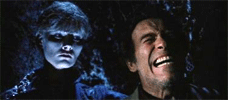
City of the Living Dead
1980 -
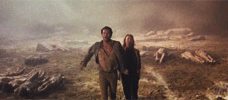
The Beyond
1981 -
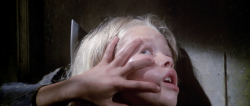
House by the Cemetery
1981 -
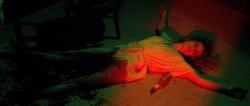
The New York Ripper
1982 -
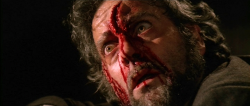
Manhattan Baby
1982 -
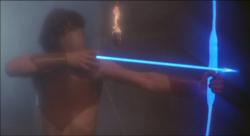
Conquest
1983
We don’t do comments anymore, but you may contact us here or find us on Twitter or Facebook.



